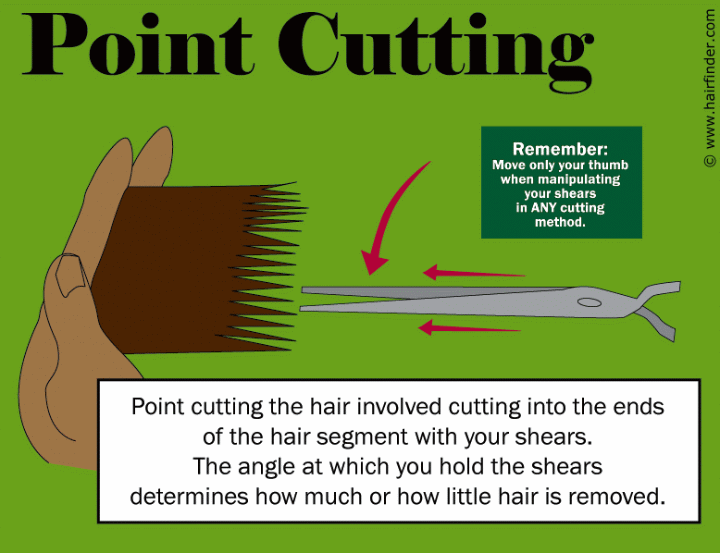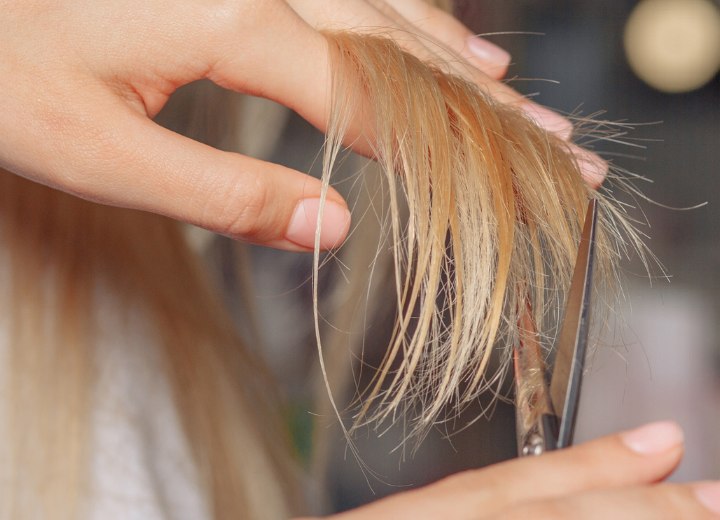Texturizing the Hair (2)

Previous page
The advantages of smooth cutting are that it allows for bulk removal from the hair while maintaining a sleek finish. Since the ends of the hair are cut randomly, the result appears more natural.
End Finishing
The most common method used today for hair texturizing falls under the category of end finishing. The specific technique referred to is called "point cutting."
End finishing techniques are most often used on shorter, layered styles, though they are also used on other hair lengths and blunt cuts. What makes them so good for shorter hair is that you can dramatically alter the finished look of a cut by using point cutting or other end finishing techniques.

When holding the shears in your hand, you should ONLY MOVE YOUR THUMB to work your blades. By practicing until you make certain that only ONE blade moves during any cutting method, you will have more control and ensure a cleaner cut.
©Hairfinder.com
See also:
Chipping and slicing
The difference between point cutting and slithering
The difference between a razor cut and a scissors cut
How to achieve a haircut with out-turned or flick up ends